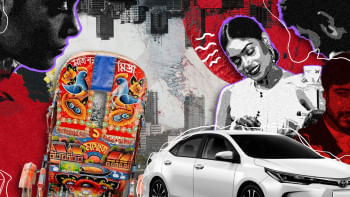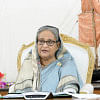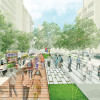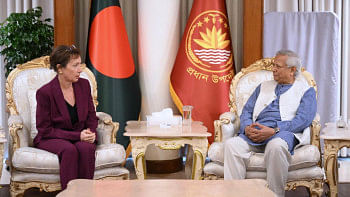What went right for Rajshahi?

Surrounded by the Padma River, Rajshahi is one of the oldest cities in the country and has a vibrant history. Once a city of narrow roads and hardly any tall buildings, the city's recent eye-catching developmental transformation has been a matter of curiosity for many. Although this transition may seem like an overnight phenomenon, it is really a combination of foresight, planning, and perfect execution.
When a city-centric economy develops, many initiatives and developmental facilities are also created due to the cost advantages. Rajshahi has a rich history of being an administrative centre, even during the colonial period. As a result, it has been a place for many major government and private offices, and a centre to flock to for people from neighbouring districts.
Consequently, a middle and affluent class (MAC) emerged in the city. Presently, a significant proportion of this population consists of young people. A large portion of Rajshahi city dwellers use e-commerce services when making purchases, and many order food online or go out to eat at restaurants. They also use various MFS (mobile financial services) and debit or credit cards to pay their bills.
The increasing consumer demand being derived from the growing MAC population is an important factor behind the rise of numerous business opportunities in the city. More and more new restaurants are opening up, and the outlets of several national services are being set up in Rajshahi city. As a result, many jobs are being generated too, and students are getting part-time jobs at these businesses. Some students are also setting up their own businesses. Gone are the days when employment in Rajshahi was limited; the city today abounds with prospects.
Rajshahi city's huge investments in infrastructure, well-coordinated planning, and immaculate maintenance complement the city's social overhead capital (SOC). This improvement in SOC is attracting a lot of new investments as well. Newly built high-rise commercial buildings are just one example of the city's now vibrant real estate sector.
Substantial allocations and efforts have been made to widen and improve the city's internal roads. Inter-district connectivity for all modes of transport has improved. Due to uninterrupted rail connectivity with nearby districts, Rajshahi citizens working in other districts now find it easy to settle at home and travel to their workplaces regularly. The connectivity with Dhaka has especially helped local businesses in transporting their goods. During the mango season, for example, the "special mango train" helps mango growers and traders to operate their businesses uninterruptedly. The foresight and willpower shown by the current mayor in implementing this in a planned manner is commendable. The city's well-coordinated and maintained waste management system ensures its cleanliness and adds to the beautification efforts.
Moreover, an increased awareness of civic responsibility, sanitation, and environmental protection among the city's population could be noticed in their active participation in numerous cleanliness activities, with them ultimately playing a part in making this city one of the cleanest in the country.
Nevertheless, just as every light casts a shadow, advancements can occasionally come at a high cost to certain groups or individuals. Many families suffered greatly when they were uprooted from their homes as development refugees to facilitate the current infrastructure growth and development. Some families had to go through the demolition of their homes and small businesses, and thus suffered severe financial shocks.
The city's excessive and costly street lighting has also met criticism, the primary being that energy is being wasted lighting the streets while a large number of Rajshahi's citizens remain without power. Environmentalists have also criticised the overexposure caused by these lights, claiming that they prevent birds and other insects from sleeping at night in roadside trees. Sadly, the city's zoo has almost completely been transformed into a recreational park, even though it was once a mark of Rajshahi's pride. Children no longer have the opportunity to interact with nature and learn about various animals and birds. Like the zoo, Vodra Park in the Padma Residential Area is also going to be converted into a concrete jungle, which will not be an environmentally friendly development for the city.
On top of all this, many commercial buildings are being constructed by occupying ponds, canals, and vacant land. Sewage systems could very well be affected by these indiscriminate development activities. The water-logging in September last year pointed out the specific failings of the city's sewage system. Besides, various ongoing development projects are taking longer to reach completion than needed. This not only results in wastage of resources but also affects people's standard of living.
Regulatory authorities like the Rajshahi Development Authority (RDA) and the Rajshahi City Corporation (RCC) need to play a more active role in ensuring sustainable development for this city that has huge potential to be a model for the country's major urban centres.
Sayed Arafat Zubayer is a student of economics at Shahjalal University of Science and Technology.
Md Mustaqim Roshid is an MBA student in the Department of Management Studies at Rajshahi University.
Dr Farid Khan is professor in the Department of Economics at Rajshahi University.
Views expressed in this article are the authors' own.
Follow The Daily Star Opinion on Facebook for the latest opinions, commentaries and analyses by experts and professionals. To contribute your article or letter to The Daily Star Opinion, see our guidelines for submission.

 For all latest news, follow The Daily Star's Google News channel.
For all latest news, follow The Daily Star's Google News channel. 










Comments